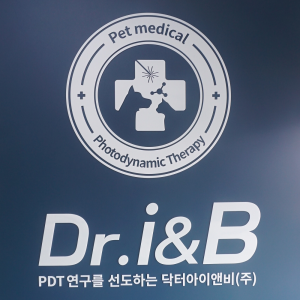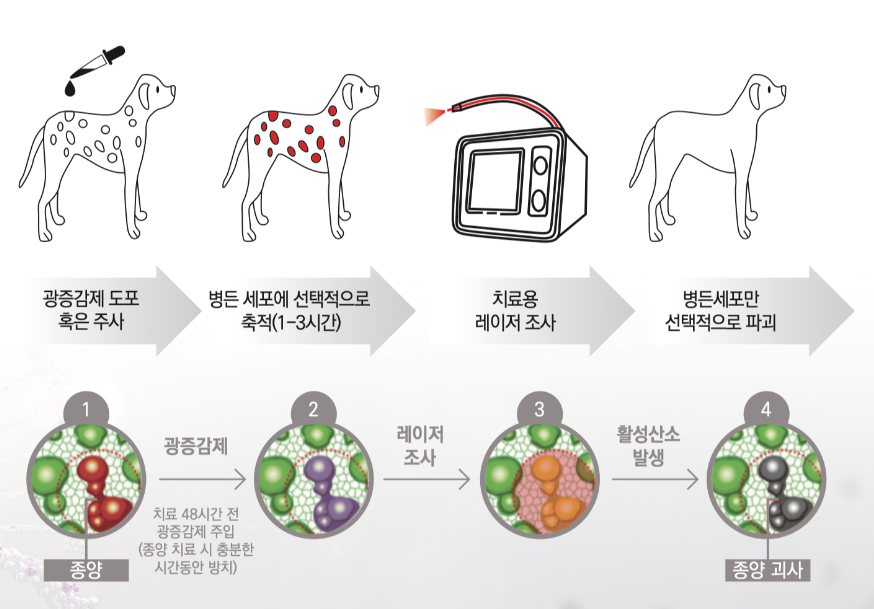

【코코타임즈】 Light can be a great cure for skin diseases. It had long been a skin treatment for psoriasis and leukoplakia in such countries as Ancient Egypt, India, and China.
Back in 3,000 B.C. in Greece, sunlight treatment was a popular option. They seemed to know that exposure to sunlight is thought to be the most natural source, now known as vitamin D, which activates cells and increases blood flow.
Even today light therapy proves its effectiveness. Ultraviolet and laser radiation are known to help chronic pain, depression, immunological disorders, and even cancer.
Now we have photodynamic therapy (PDT). PDT combines light therapy with the application of a substance that reacts to light called photosensitiser.
Niels Finsen (1860-1904), a Danish scientist who won the Nobel Prize for medicine in 1903, successfully treated cutaneous tuberculosis and smallpox with light therapy. These diseases were considered incurable back then. Later, in the 1970s, many treatment methods were developed for illnesses such as skin cancer.
In 1997, some photosensitisers got the United States Food and Drug Administration (FDA) approval. Photosensitisers, light, and oxygen react to specifically target and kill germs and malignant cells.
PDT now for animals
Twenty years have passed since the FDA approval. Now they are used in various treatments ranging from acne to skin disease to cancer. Most acne treatments get rid of the spot itself, and the PDT is designed to kill the bacteria - there is less damage to the skin.
 Dr.i&B is a leader in this field. Coming from an understanding of the problems inherent in antibiotics, steroids, and antifungals, Dr.i&B started with a “patient-centered” approach which put the health of dogs and cats first.
Dr.i&B is a leader in this field. Coming from an understanding of the problems inherent in antibiotics, steroids, and antifungals, Dr.i&B started with a “patient-centered” approach which put the health of dogs and cats first.
Dr.i&B President Song Young-gyu said: “I wanted to break the vicious cycle which lessens the symptoms momentarily only to end up in an untreatable state.”
Skin problems are the most common animal diseases. Sadly expecting a full recovery seems impossible. This is especially true for diseases such as atopy and allergies.
Furthermore, with the increasing longevity of animals, there has been a proliferation of chronic, degenerative, and genetic diseases. Just like old people suffering from cancer and having eyesight reduced, pets follow the same way.
Whether to choose a temporary reduction of symptoms or a time-consuming path to curing the diseases is a decision left to the owners.
 Song, who received a Ph.D. in engineering, has worked with lasers at the Electronics and Telecommunications Research Institute (ETRI). He came up with the idea of applying human lasers to dogs and cats during his time at the ETRI.
Song, who received a Ph.D. in engineering, has worked with lasers at the Electronics and Telecommunications Research Institute (ETRI). He came up with the idea of applying human lasers to dogs and cats during his time at the ETRI.
“When you apply or inject the photosensitizer to the affected area, the drug accumulates in the tumor cells,” the president said. Then the drug reacts and kills the malignant cells when you direct a laser at it. The key point of the treatment is that it selectively destroys malignant cells without much pain or complications.”
Since Dr. Song began his research in this technology in 2014, he found out that PDT proves effective, but the cost was too high. Many people cast doubt on the use of such costly treatment for animals.
At the time, even veterinary clinics specializing in tumors would only use the drug for diagnosing cancer. PDT for animal treatment was already common in places like Japan, but in Korea the drugs were expensive and there were no lasers made for animal use. There were no drugs made for animal use either.
Dr.i&B decided to set its sights on making drugs and laser devices affordable to veterinary clinics. Photosensitiser PhotoCure arrived. Its key component is extracted from Spirulina, which is known as one of the “top 10 superfoods.”
Treating cancer in the future
“If you apply PhotoCure to the diseased skin cells and shine the laser beam on it two hours later, the change starts to happen,” the doctor said. “In one week, the germs die and the immunity of the cells go up.”
It is a revolutionary treatment that can make full recovery possible. Veterinary clinics and experts in the field have started to pay attention to its effects and potential. In the early stages of the disease, it took about one to three weeks to cure.
 Dr.i&B is now developing PhotoMed, which is aimed at cancer treatment. It is a second-generation drug with shorter accumulation and elimination times.
Dr.i&B is now developing PhotoMed, which is aimed at cancer treatment. It is a second-generation drug with shorter accumulation and elimination times.
“In vitro tests with breast cancer and pulmonary cancer revealed it to be 100 times more effective compared to similar products,” Song said. “We will finalize the toxicity tests within this year, then we will begin clinical trials for cancer in dogs.”
Two models of laser emitting devices - PDToA-153, PDToiB-153 - have been developed and have their manufacturing licenses as animal medical devices.
There are big expectations for PDT treatment of skin diseases and tumors in Korea these days. It will be a turning point for tumor treatment, which has relied on over 90 percent of surgery.
Economic value matters. Various investors, including a pharmaceutical company, health supplement company, and organic pet-food company, have invested in Dr.i&B as the licensing procedure is nearing a conclusion.
“If we get the license for new drug development with the country’s technology, it will be a great opportunity for us to expand the domestic market and enter overseas markets, such as the United States and China,” Song said.
Related article:
닥터아이앤비, “반려동물 피부병도 종양도 빛으로 치료한다” 바로가기









